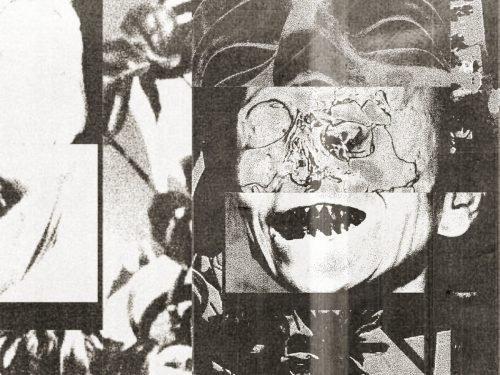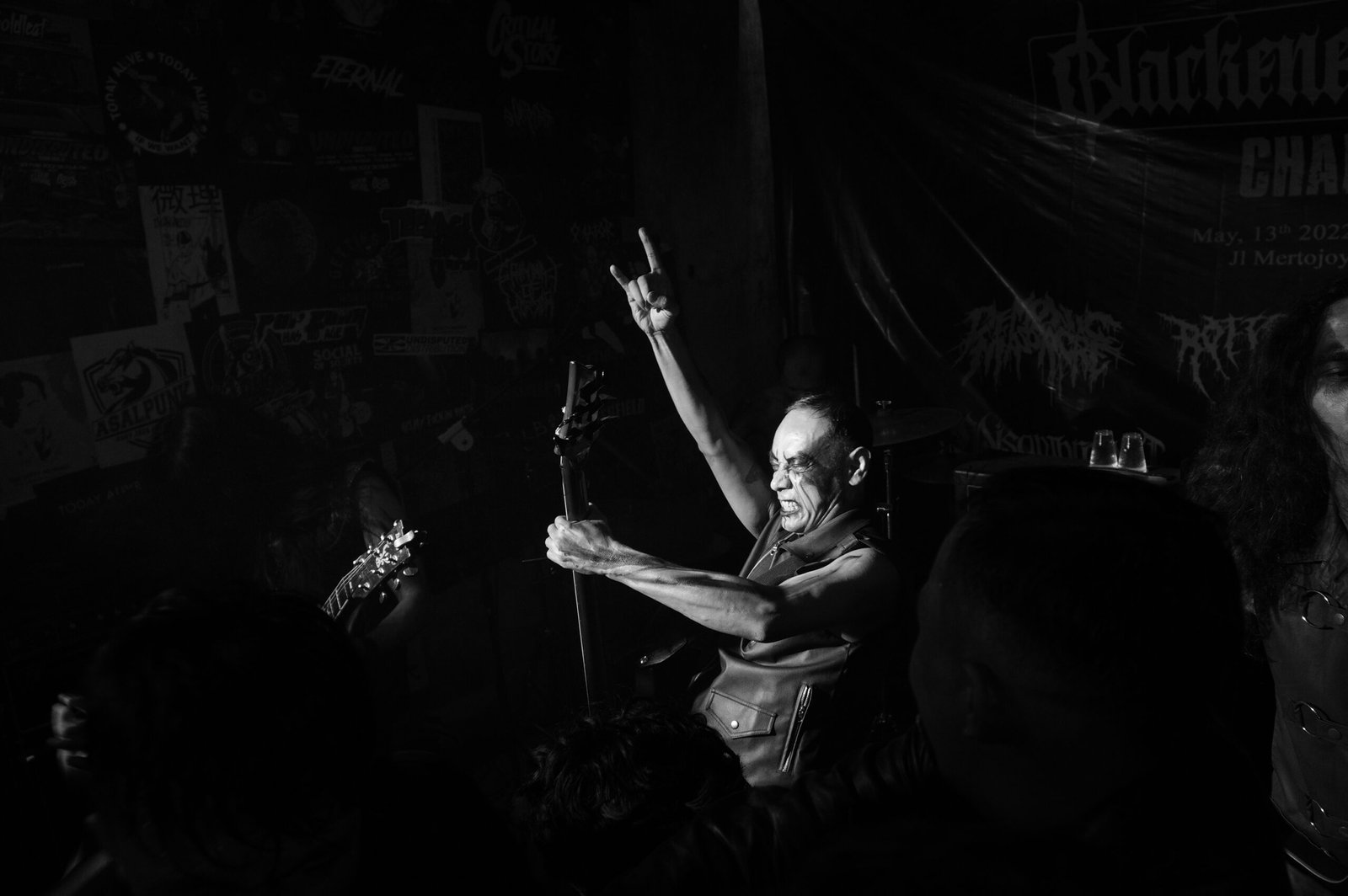Interview with Nur Sabar Oktavani (Potong Jari label)

The Indonesian music scene has many faces, some of them visible more, some less. The least known about, I’d guess, but probably the most appealing – either sonically or graphically, is the noise genre (and its subgenres).
As I haven’t covered noise in any form here in Indokult, with a great pleasure I’m changing this with my very first Indonesian noise interview.
Please, welcome Nur Sabar Oktavani from the Potong Jari label!
Greetings and welcome to the family of Indokult, brother! How are you doing these days? Can you introduce yourself and your label, Potong Jari, to our readers?
Hello, Rudolf. It’s an honour to be welcome in Indokult Family, thank you. Well these days, as everyone is, I’m trying to keep sane, healthy, creative and more close to my family. My name Nur Sabar Oktavani. I run small batch label in Tangerang, Indonesia since 2016. Focusing on Experimental, Noise, Electronics, Ambient, Black Metal & Psychedelic rock releases.
Out of curiosity, how did you manage to get yourself into noise, what was your journey to this interesting field of sonic experience? Any particular artist or release responsible for that? What fascinates you in noise and the experimental music as a whole?
Actually I love the sound of distortion and fuzz in every records that I bought when I was still in school. I like the sound of a guitar, bass, drum, vocals or non-musical instrument when it synthesises with distortion, fuzz or other pedals which creates an unusual and specific characteristic of the artist’s song/album. I always admire the courage and creativity for experimenting the sound and discover the new length of style in creativity or in music. Long story short, I found duo called “Senyawa” (Rully & Wukir) based in Yogyakarta, that deliver new style in Indonesia music scene, that impact me so much to going deeper to experimental and noise. What fascinates me in noise and experimental music is the freedom (you can be extreme to the fullest).

Why “Potong Jari”? I’ve found out it means “Cut Finger”…is there any symbolic or significance beyond that name choice?
The name Potong Jari is inspired by “Iki Palek” Tradition from the Dani Tribe in Papua. It is a tradition of cutting a finger when a member of a family died, done as a symbol of love and grief from other family members. It doesn’t have a direct connection to the actual tradition but I use the name as inspiration.
According the information available, you started the label in 2016. What was the main reason and driving force for that? What did you find the most enjoyable – and on the contrary, most difficult – in running the record label?
I was doing my solo project called SAABA, and I want to release my album that time. my acquaintance gave me an advice to start my own label to release the album and that he would help distribute it at his records store. First try and I got so excited of the process and work, from making the music, publishing the product and even delivering the records to the store. All was done by myself and I got “hooked” in that work of creativity. To me, every aspect of making music/noise, producing, releasing, distributing is hard work, but the difficulty is what makes the whole process enjoyable. hahaa…
Seeing that most of your physical releases are sold out already, have you ever thought or doing a re-release of certain titles?
Most is sold out because it’s produced in a small batches, usually only 10 to 50 copies. for each track or album. It is limited so hopefully it makes a more intimate connection between the artist and the people who buy or support our works. Re-release is definitely possible in the near future.
Noise is not just a genre (no matter how many people would look at it), but it’s also a certain aesthetics. Browsing the titles you’ve released so far, they are all eye-catching… which style do you prefer more, the black and white minimalism of Sayat, Aruh or JAGA2X or the colourful expressions found in the some Talun Awan releases?
I like both, the BW minimalism because of the simplicity, the rawness and the texture that often represent the records and colourful ones for describing the progressive and more dynamic composition structure of the records.
I will admit without any problems, that I’ve not encountered the artists of your label before (but then, I don’t claim to be a noise expert). Do you aim to release Indonesian noise art exclusively? If not, what are the criteria you’re choosing what to release (if there any at all).
The first idea of Potong Jari is a house for my own creativity. so that I can distribute it. But in time I met many new friends a long the way. So…the idea also expands along with it. All of the friends I’ve met (noise artist and musicians) so far, are always trying to inspire each other and built stronger relation by collaborating and releasing projects or albums together. For now, I have only been releasing Indonesian noise artists and still try to focus on exploring this. Potong jari have released a split album from Sajjra (Peru) collaborating with Karvng nyavva (Indonesia) in digital form. It was the first album that featured an artist from outside indonesia. The project was requested by a noise artist friend, and I’ve thought, well, why not and took the challenge. To be honest, I don’t have any specific criteria, other than the quality of the work itself. But for now, I’m still focusing on releasing works from fellow noise artist friends around Indonesia.
But Potong Jari is not just noise, as you focus on other genres too – electronics, ambient, black metal & psychedelic rock also. For those readers not knowing anything about the releases you’ve put out, can you briefly mention the some of your releases you would consider the best in those genres? I know that might be quite difficult….
All releases have their own distinct quality. Instead of choosing, maybe I can share with you a brief picture of some artist featured in Potong Jari. The electronics ones are ER666OT, Glibly Ninja, and JAGA2X, each with their own style. For instance ER666OT (Putu Kawi) is more on 8bit chaos with repetitive dark beat. Glibly Ninja (Billy Anjing) Raw industrial techno with the blood of punk, and JAGA2X (Pierre Alvin) Funkot with blessing from gamelan bali, but in our release JAGA2X experimenting with “Noise set” (Live at Sanen Session). Sayat and Tarak on Black metal releases brings the style of Denmark Black Metal influences. Talun Awan for Psychedelic rock release brings style from krautrock, alternative to psychedelic surf rock that screams hard. All are the best in their own ways. Maybe the readers can try to listen and hopefully will find new experiences and sensations after listening.

Your latest release (at the time of this writing) was Sunyi Lantang’s short “Aborsi Gagal” (which I’ve also reviewed in Indokult). What are you working on now, can you give us a hint?
First of all thank you so much for the review, I really appreciate it. There are not many reviews that writes about noise here, so it was a privilege for Potong Jari & Sunyi Lantang to be reviewed by Indokult.
I am still making records and is currently experimenting with some field recording.
Not all of Potong Jari releases got physical releases, which is shame, how do you view the future of music from that standpoint? Do you find digital (like Bandcamp) easier to operate, or you are more of a traditionalist, viewing the physical release not only as a tool, but also a part of the art?
I definitely still get excitement from having a physical release instead of just downloading a digital file that I can’t see. But the fact that experimental music and noise still have a very small scope of listeners in Indonesia, is the reason why I choose to release only small batch of cassettes and CD-R. I also use digital platforms that people might look into, like Bandcamp and Soundcloud, but prefer not to use Spotify and other platforms. I tend to not give too much thought about the future of the music industry from the moment I started and just focus more on making what I want to make to the fullest no matter what.
I always stress the size of the Indonesian music scene, so I think it’s quite impossible to cover everything this beautiful country of yours has to offer. Speaking about experimental, how does that scene looks like? Can you tell us about some notable events and introduce us to labels and artists worth of notice?
I think the experimental scene here is now more active and expanding, but I don’t think everyone is open and ready to this kind of movement. There are Collectives & Events like Jogja Noise Bombing (Yogya), Chaos Non Musica (Bali), Malang SubNoise (Malang), Bengawan Noisesyndicate (Solo), Tanam Bunyi (Tangerang), MindZap (Jakarta), Sontak Festival (Bandung), Senandung Rusak (Samarinda), Makassar Noise Terror ( Makassar), Rumah Hutan Drupadi (Palu), PeopleLabs (Sumatera), and label Spasm records (Jakarta&Bandung), Art Rape records (Jakarta), Gerpfast records (Malang), Relamati records (Yogyakarta), Ohoi Records (Bali), and more. These are some examples of record labels and collectives, each with their own type of noise and experimental artists from several areas in Indonesia. For you and the readers that are interested can maybe explore these labels and collectives to get to know more about the artists and their works.
For those interested in knowing more about your label…where can they find you and where can they look for your releases?
Go to Bandcamp, Soundcloud, Youtube and Instagram Potong Jari.
Thank you for your time, brother…any final message to the readers of Indokult?
Stay sane and love your family. Thank you so much for the opportunity Rudolf and Indokult!
You are most welcome!!! Thanks for your time!




